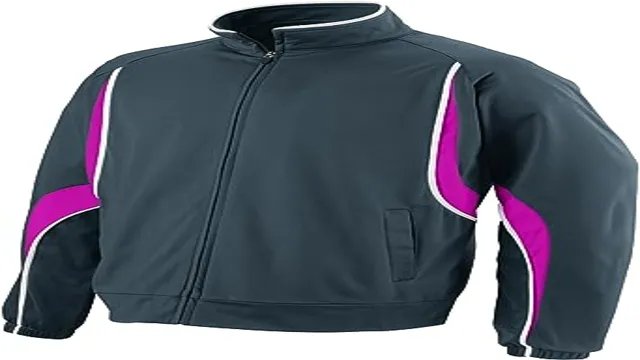
When it comes to the world of athletic apparel, there are two brands that reign supreme: Nike and Adidas. The rivalries between these two giants have been going on for over half a century, and the competition has only grown more intense with time. Each company has its own unique style and philosophy, but they both have their own passionate fanbase.
It’s hard to say which is better, as each has its own strengths and weaknesses. But one thing is for sure: the rivalry between Nike and Adidas has only made the world of sports more exciting. In this blog post, we’ll take a look at the history of this rivalry and examine what makes each brand so unique.
Whether you’re a sports fan or just interested in fashion, there’s something to learn here. So let’s jump in and explore the world of Nike vs. Adidas!
Market Share Comparison
Nike is a long-standing sportswear rival of Adidas, and their market share comparison has been a highly scrutinized topic for years. While Adidas has been in the sports apparel game for over 70 years, Nike emerged as a major player in the industry in the 1980s with their “Just Do It” campaign. Today, Nike has a dominant market share of nearly 27% in the global sports apparel industry, compared to Adidas’ just over 16%.
While both companies have seen steady growth in recent years, Nike’s focus on innovation and technological advancements have given them a leg up in the competition. However, Adidas has made strides in increasing their digital presence and targeting younger consumers, indicating that the rivalry between these two iconic brands will continue for many years to come. Regardless of which brand ultimately comes out on top in terms of market share, it’s clear that both Nike and Adidas are major players in the industry and have had a significant impact on the way we view and purchase sports apparel.
Nike’s Dominance in the U.S.
Nike has been dominating the sneaker industry in the U.S for quite some time, and that is evident when we compare their market share with their competitors. According to a report by NPD Group, in 2020, Nike’s sneaker market share in the US was 2
9%. In comparison, the second-largest company, Adidas, trailed behind at 5%.
This means that Nike’s market share is almost triple its closest competitor, making it the clear leader in the market. Not only that, but Nike’s sales in the US have also been on the rise, with a 32% increase in sales reported in 202 This can be attributed to the company’s strong marketing campaigns, significant endorsements, and a wide range of stylish yet comfortable products.
With such a considerable market share, it’s no surprise that Nike has become a household name and a symbol of quality in the sneaker industry.

Adidas’s Stronghold in Europe
When it comes to sportswear companies, Adidas is without a doubt one of the most prominent players in the European market. With a history dating back to the early 1900s, the brand has built a strong presence that is hard to ignore. When comparing market share, Adidas has certainly secured a robust stronghold over its competitors.
In fact, according to statista.com, Adidas is the second-largest sportswear company in Europe, only behind Nike. However, its market share is significantly larger than other competitors, such as Puma and Reebok.
This success can be attributed to the company’s various partnerships and collaborations with high profile athletes, such as Lionel Messi and Paulo Dybala, which have undoubtedly contributed to its popularity and visibility. Adidas’s iconic three stripes design is easily recognizable and worn by individuals of all ages, and its shoe and clothing designs are constantly evolving to fit current trends. With Adidas continuing to release new collections and partnerships, it’s clear that the brand will continue to maintain its stronghold within the European market for years to come.
Brand Success Factors
Nike, the long standing sportswear rival of adidas, has achieved tremendous success through a combination of various factors. First and foremost, Nike understands the importance of brand identity and has been able to establish itself as a premier brand in the world of sports. Their iconic “swoosh” logo is easily recognizable and has become synonymous with athleticism and excellence.
Nike has also been able to leverage the power of celebrity endorsements to their advantage, partnering with some of the biggest names in sports to promote their products. Additionally, Nike has invested heavily in research and development to create innovative and high-quality products that meet the needs of athletes at every level. Finally, Nike has an excellent marketing strategy that is geared towards engaging their target audience and creating a sense of community around their brand.
By focusing on these key factors, Nike has been able to stay ahead of the curve and remain a dominant force in the sportswear industry.
Product Innovation
Product innovation is a crucial element for the success of any brand. However, there are several factors that must be considered to achieve this success. One of the most important factors is understanding the needs and wants of the target audience.
A brand should be able to grasp the pain points of their consumers and create products that cater to those needs. It’s not only about creating something new but also solving problems and making life easier for the consumers. Another factor is staying ahead of the game by keeping a close eye on competitors’ products and the latest technology trends.
It’s essential to incorporate modern technology and stay abreast of industry advancements to ensure that the brand stays relevant. Additionally, the brand should prioritize quality and consistency in all aspects of product development and delivery. Quality over quantity is the preferred approach, and consumers will always appreciate a consistent experience.
Finally, being open to feedback and willing to adapt and evolve is key to maintaining long-term success. By taking these factors into consideration, any brand can thrive through product innovation.
Marketing Strategies
One of the critical factors that contribute to the success of a brand is its ability to create a lasting impression in the minds of its target audience. A strong brand is easily recognizable, memorable, and stands out in a crowded market. To achieve this, companies need to invest in a comprehensive brand strategy that involves consistent messaging, a well-defined target audience, effective communication channels, and quality products or services.
Brands that excel in these areas are more likely to gain a competitive advantage and win the trust and loyalty of their customers. It’s also essential to adapt to changing market trends and consumer behavior and continuously refine your brand strategy to ensure its relevance and effectiveness. By doing so, you can build a strong and distinctive brand that resonates with your customers and drives business growth.
So, if you want to create a successful brand, invest in a holistic branding strategy that considers all the essential factors while staying true to your brand’s core values and purpose.
Athlete Endorsements
Athlete endorsements have become a crucial factor in the success of many brands, particularly those in the sports industry. It’s no secret that companies pay big bucks to have celebrity athletes endorse their products, but what makes this marketing strategy so effective? For one, athletes often embody the values and qualities that a brand wants to associate with their products. For example, a brand selling running shoes may partner with a track star known for their speed and endurance.
Additionally, athletes have a large following and fan base, meaning that their endorsement can reach millions of people. However, not all athlete endorsements are created equal. Factors such as the athlete’s reputation, their level of success, and their connection to the brand all play a role in how effective their endorsement will be.
Furthermore, it’s important for brands to ensure that their chosen athlete is a good fit for their image and values. In short, athlete endorsements can be a powerful marketing tool when executed correctly, but not all partnerships are created equal.
Future Outlook
As a long standing sportswear rival of adidas, it’s always interesting to speculate on what the future might hold for this brand. One thing is for sure, they’ve been around for a long time and show no signs of slowing down. In recent years, they’ve made a name for themselves by partnering with major athletes and expanding into trendy lifestyle apparel.
These are smart moves that keep them relevant, but they also need to continue innovating in order to stay ahead of the game. One future trend that could be particularly relevant for this brand is sustainability. More and more consumers are becoming eco-conscious and looking for apparel that’s made from eco-friendly materials.
By investing in sustainable production processes and materials, this brand could appeal to a whole new demographic of buyers who are looking for environmentally responsible options. If they can execute on this and continue to build their brand through savvy marketing and partnerships, they could remain a major rival to adidas for years to come.
Potential Disruptors to the Industry
As technology continues to advance at an unprecedented pace, many potential disruptors are emerging in the insurance industry. One of the most significant changes that insurers are expecting is the rise of the Internet of Things (IoT), which will have a profound impact on risk assessment and claims management. Connected devices such as smart homes, telematics, and wearables are becoming more prevalent, providing insurers with vast amounts of data that can be analyzed to better understand risks and drive personalization.
This, in turn, will lead to the development of new insurance products and policy options. Additionally, the rise of Insurtech startups is dramatically changing the distribution model by leveraging advanced technologies such as AI and machine learning to provide a more straightforward, faster, and more customer-centric insurance experience. The industry is also witnessing an increased focus on sustainability and green initiatives, as more and more companies seek to reduce their carbon footprint and minimize environmental impacts.
Overall, the future outlook for the insurance industry is likely to see a continued shift towards digitalization and customer-centricity while embracing new technologies to improve efficiency and better understand customer needs. As insurers adapt and evolve to meet these challenges, those that can stay ahead of the curve will be well-positioned to succeed in the years ahead.
Projected Growth of Nike and Adidas
When it comes to the projected growth of Nike and Adidas, all signs point to continued success. Nike, for example, has seen steady growth over the years, with its most recent earnings report showing a 96 percent increase in online sales. This growth is projected to continue as Nike expands its digital offerings and continues to innovate with new products.
Adidas, on the other hand, has seen a bit of a slowdown in recent years but is still expected to grow in the coming years. One major factor contributing to this growth is the company’s focus on sustainability and environmentally friendly practices. Overall, both Nike and Adidas are well-positioned for continued success in the future, with their loyal fan bases and commitment to innovation.
Conclusion
After years of rivalry, it’s clear that adidas and its long-standing sportswear opponent have more in common than they may have realized. Both brands have pushed the limits of athletic apparel, testing the boundaries of comfort, technology, and style. From the iconic three stripes to the recognizable logo of the opposing brand, there’s no denying the impact these two companies have had on the world of sports fashion.
In the end, it’s a friendly competition fueled by a shared dedication to innovation and pushing the boundaries of what’s possible. So whether you’re team adidas or team rival, we can all appreciate the incredible contributions both brands have made to the world of sportswear. “
FAQs
What is the name of the long standing sportswear rival of adidas?
The long standing sportswear rival of adidas is Nike.
When was Nike founded and by whom?
Nike was founded in 1964 by Bill Bowerman and Phil Knight.
What is Nike’s slogan?
Nike’s slogan is “Just Do It.”
What is Nike’s most popular shoe?
Nike’s most popular shoe is the Air Jordan.
What is Nike’s estimated net worth as of 2021?
Nike’s estimated net worth as of 2021 is $214 billion.






